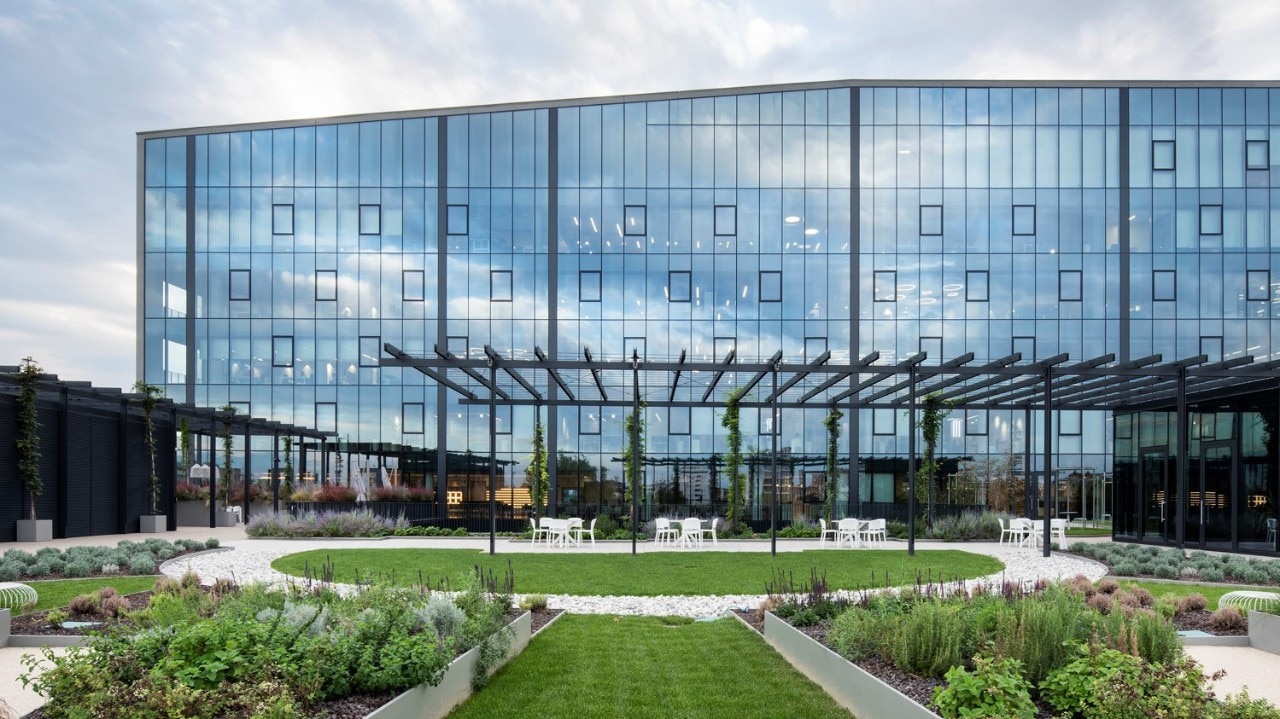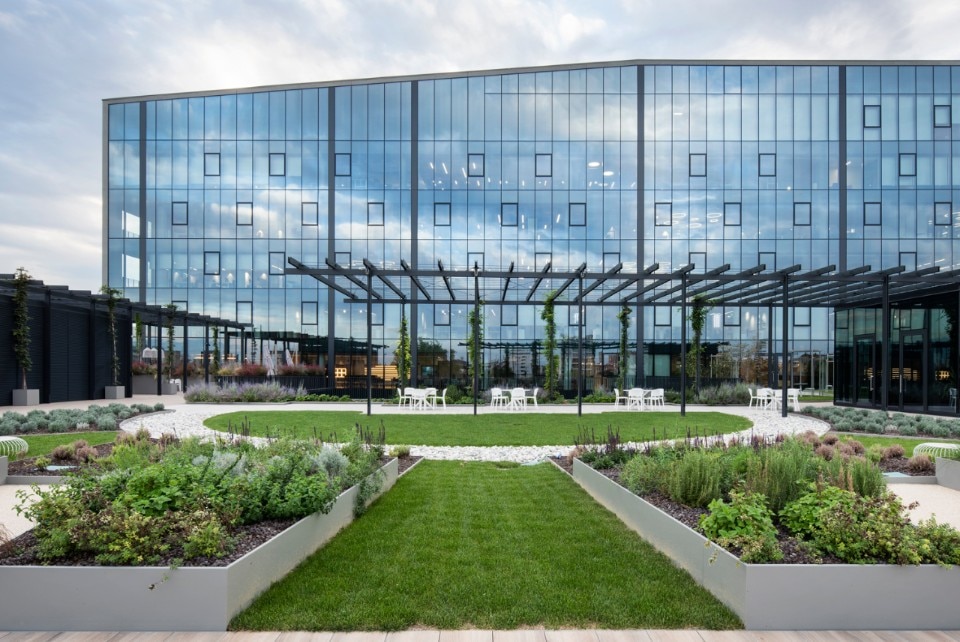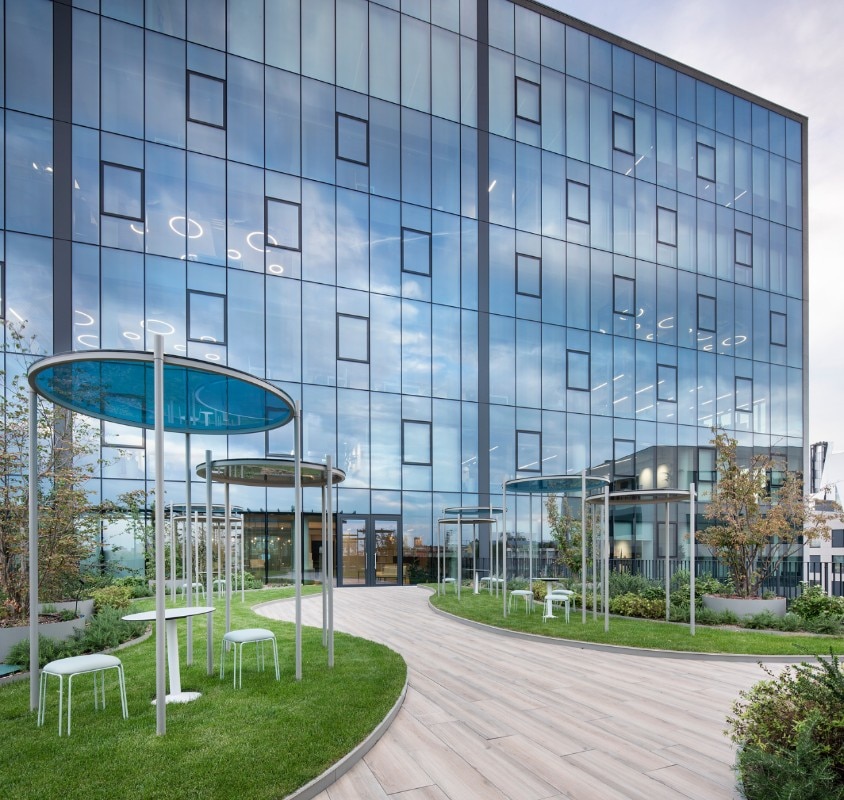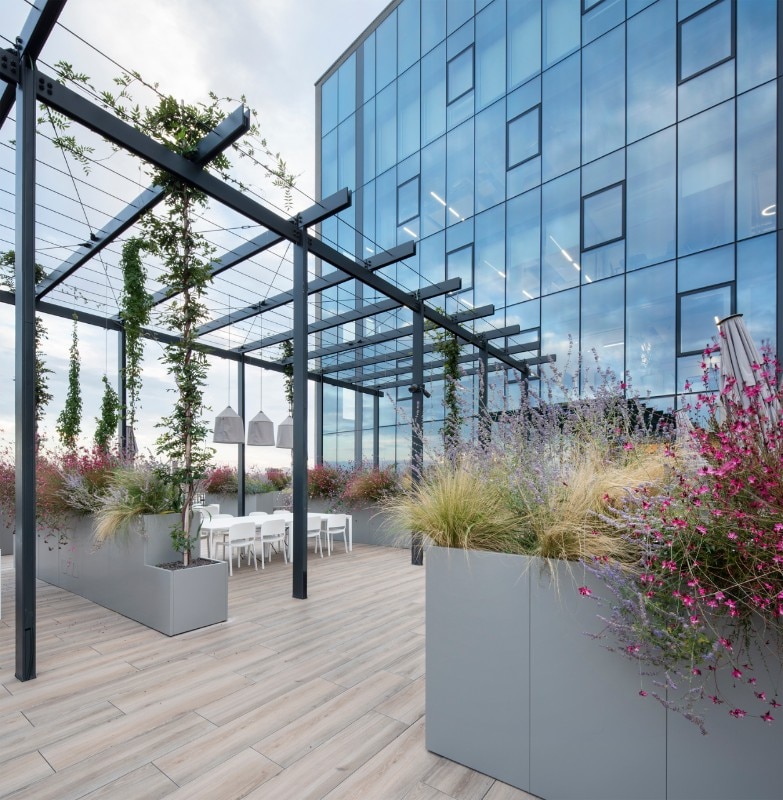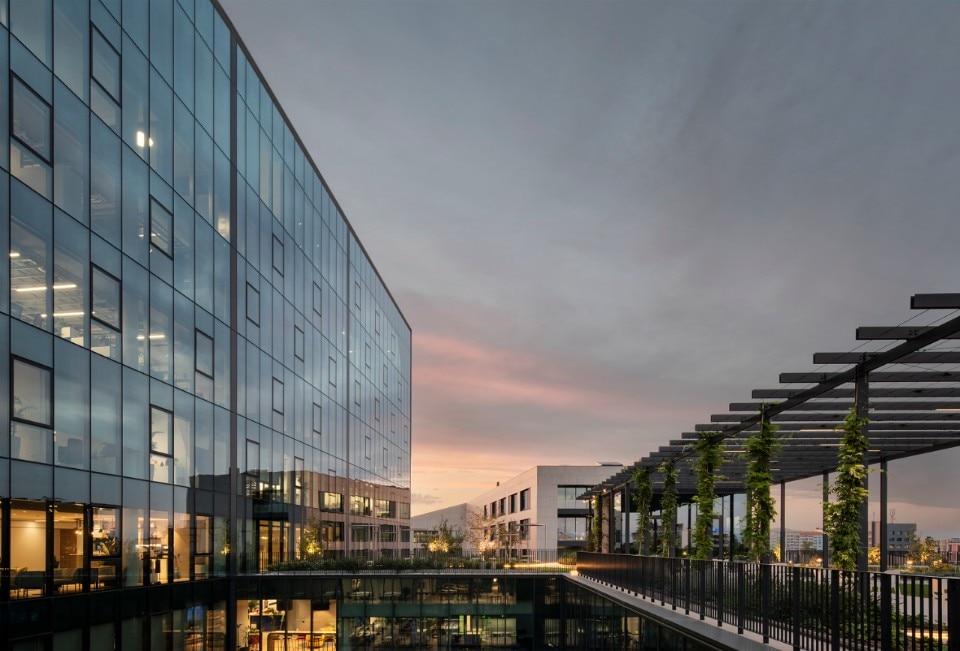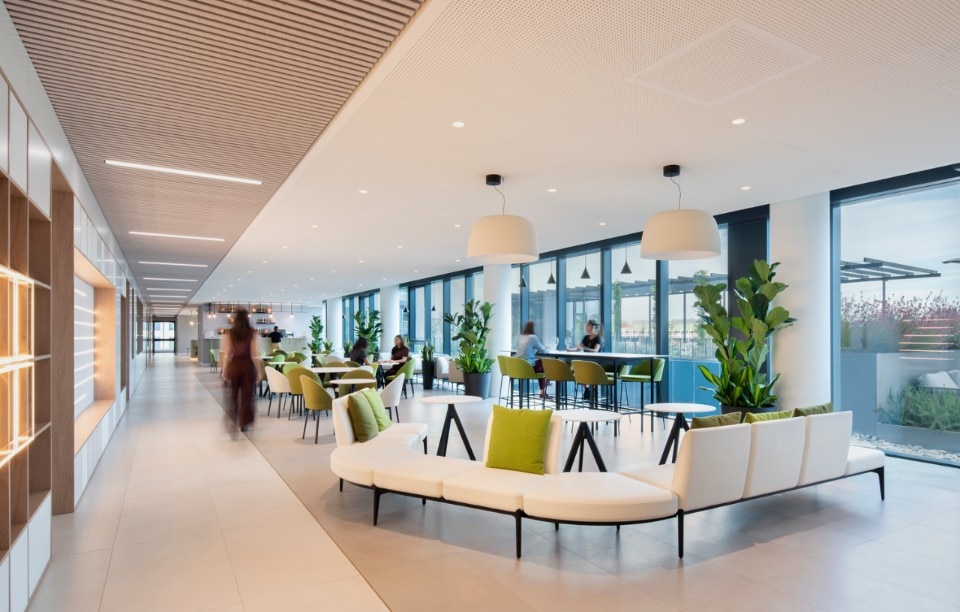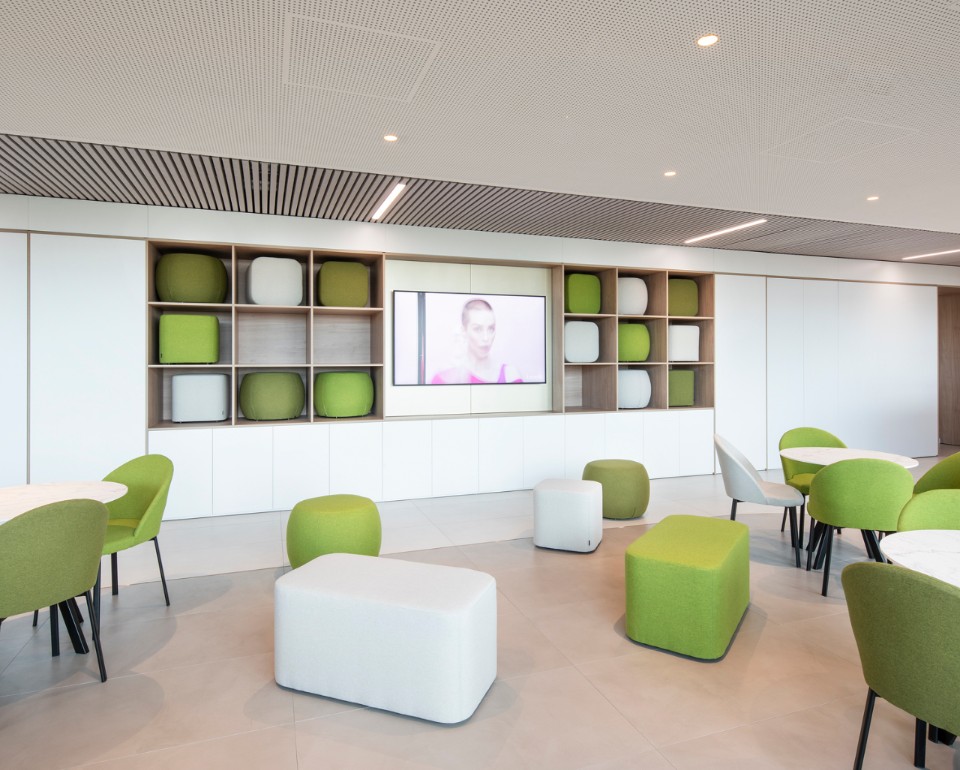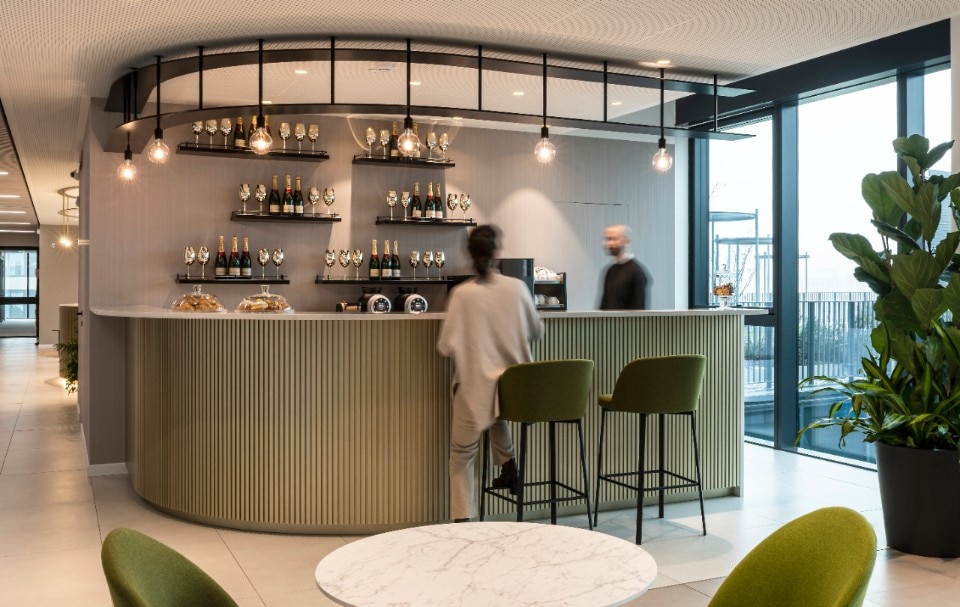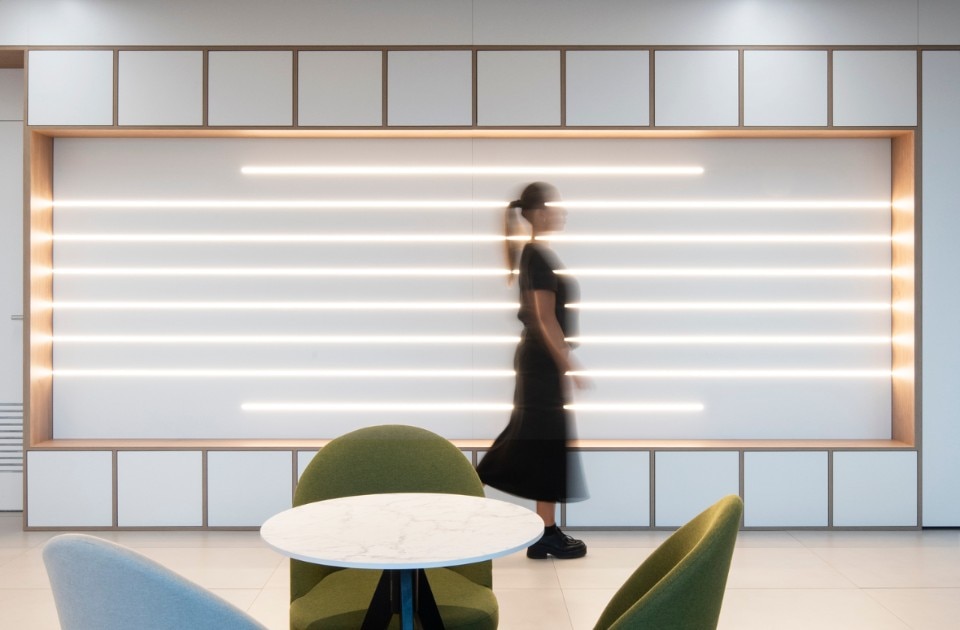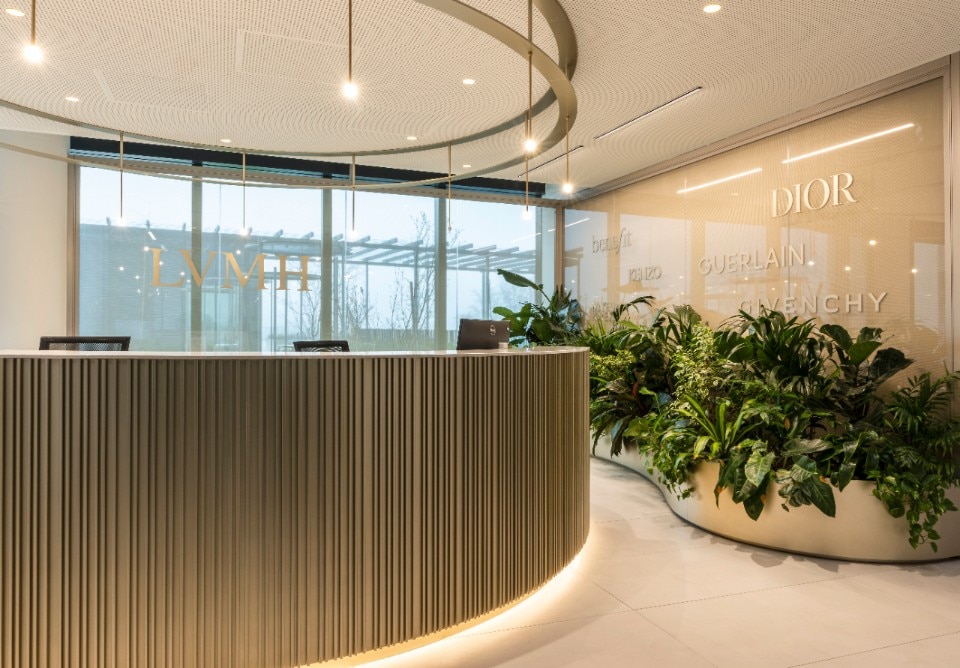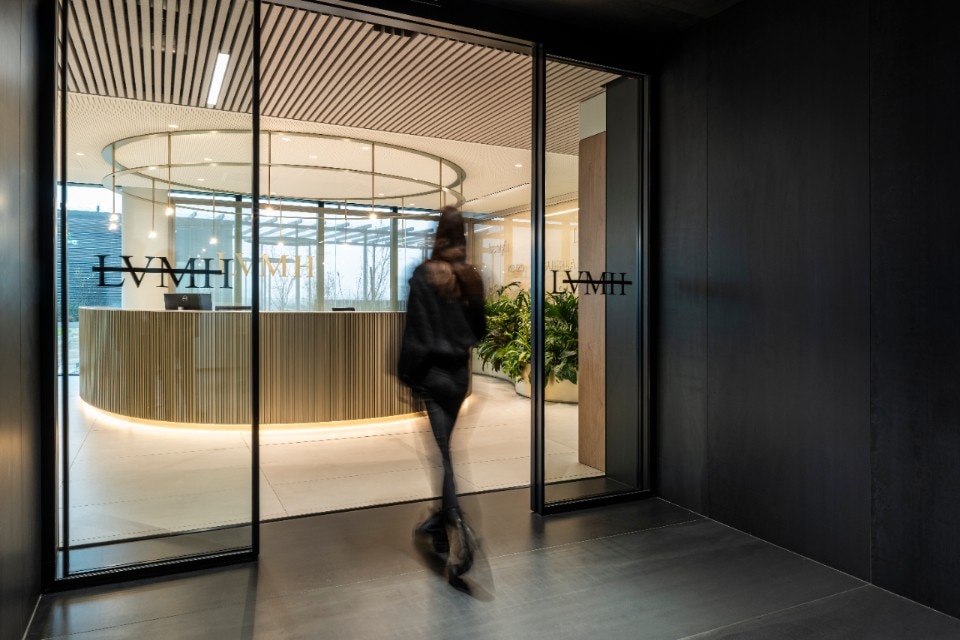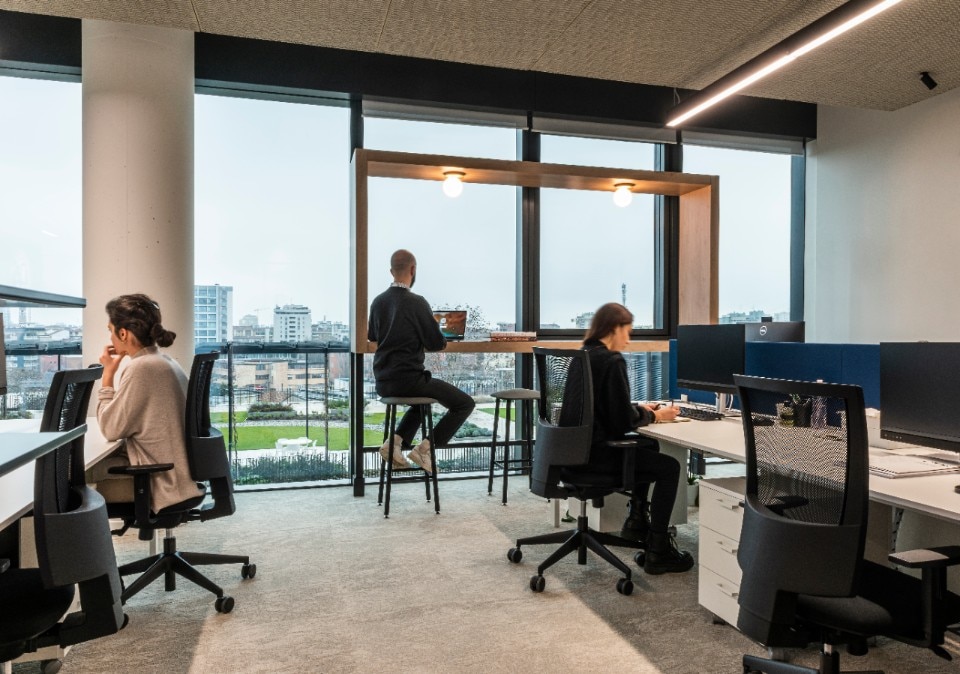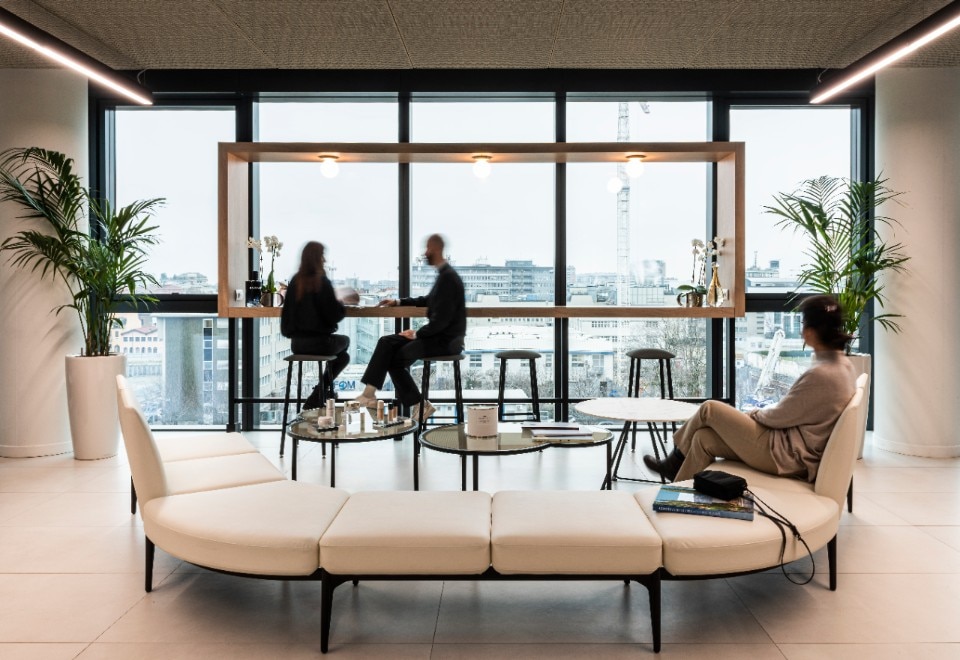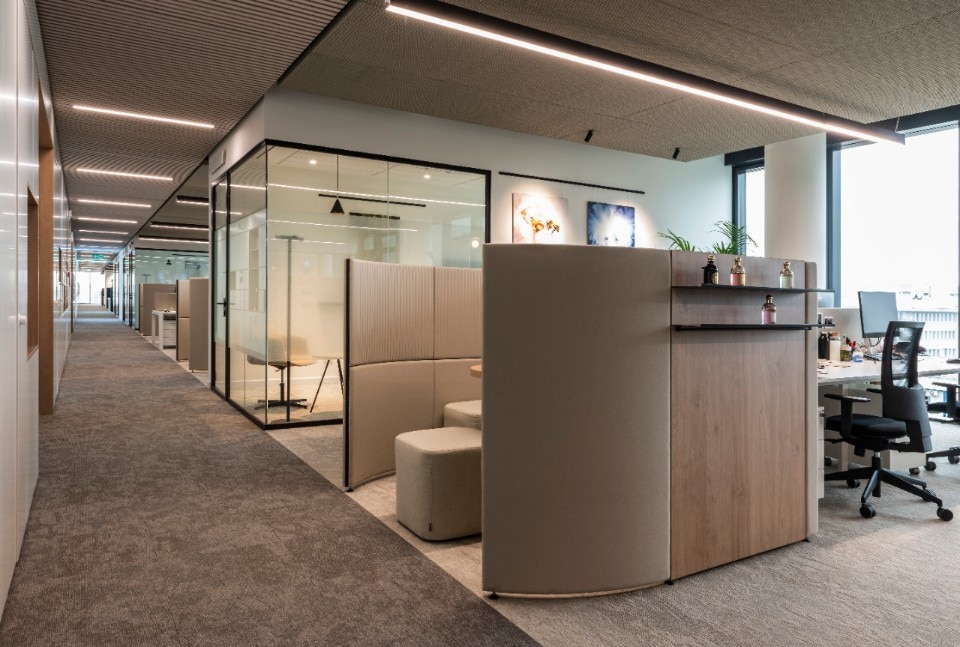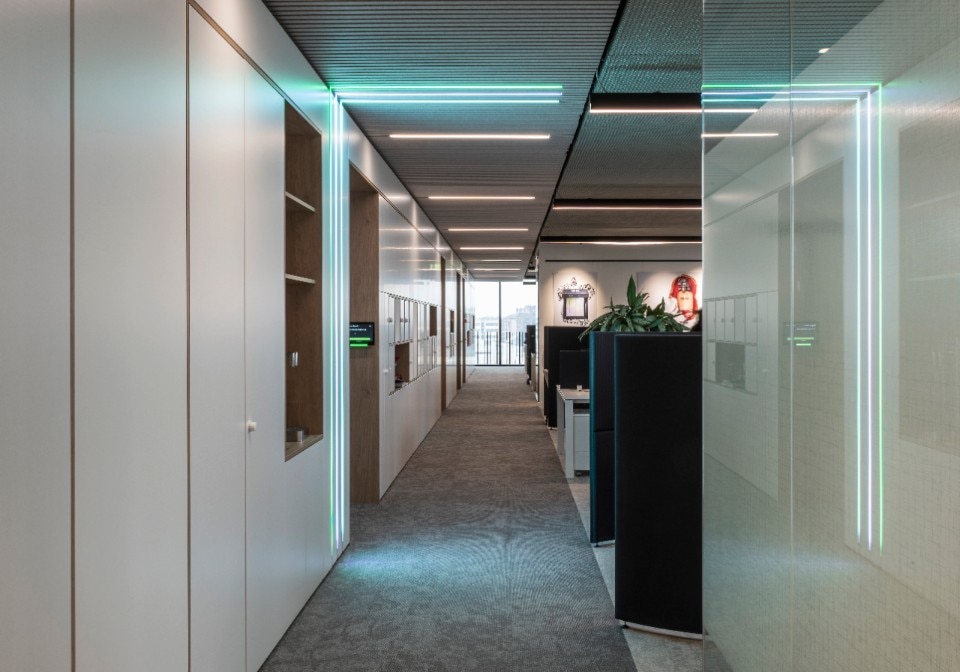What has become the meaning of the term headquarters today? Its conformation is increasingly moving away from archetypes such as the stand-alone building, but also from certain twentieth-century notions such as the conventional office centers where a rigid structure flattens the identity and character of companies and people.
Today, especially after the pandemic, in times when smart working has been discovered and affirmed as remote work, shaping and characterizing physical workspaces has become a very delicate, the real ground for experimentation and negotiation aimed at preventing the abandonment, of such spaces, between great resignation and new claims for work modes that can enhance the quality of life of individuals.
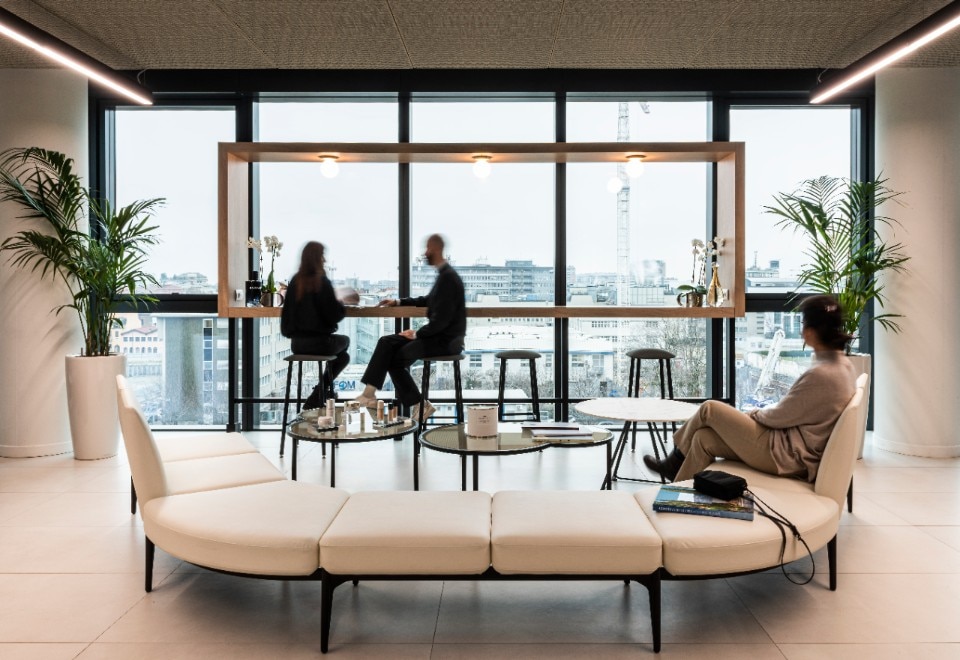
The Italian branch of LVMH Beauty, reuniting its brands after 20 years in different locations, and moving in two floors of the new Symbiosis complex, in Milan – an interior design project entrusted to Il Prisma – has specifically addressed these urgencies, starting from a principle that Country General Manager Giuseppe Oltolini has summed up in an image of extreme clarity: “Real smart working must become the one that happens at the office”. Physical space must provide those conditions of perceptual and relational well-being that make it desirable, even preferable to staying at home.
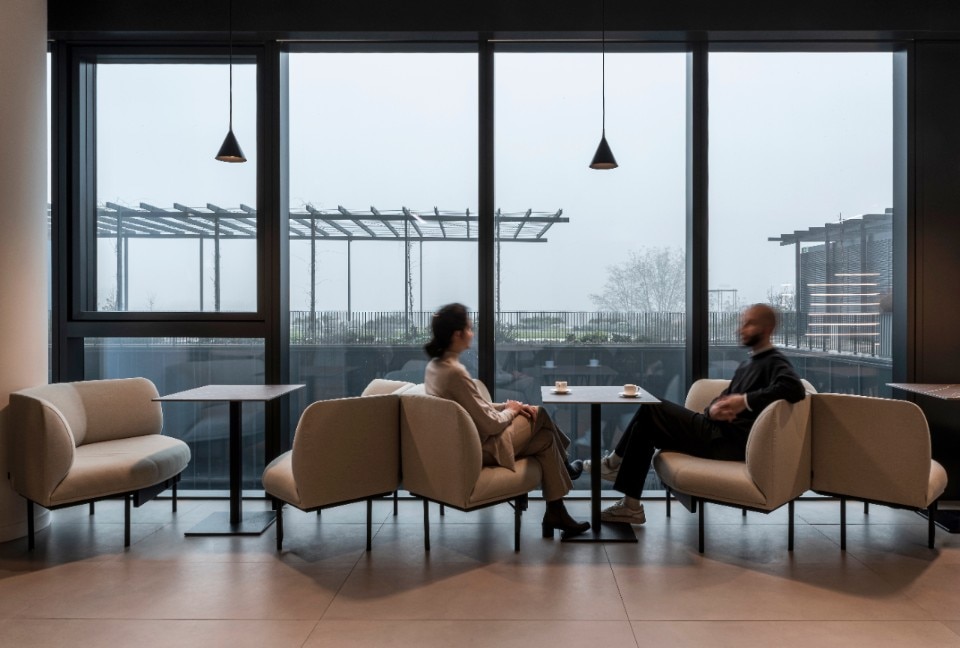
Plurality and sharing immediately stand out as the structure of the project, starting from the very building where it has been located: in its program, Symbiosis might be categorized as a conventional multi tenant complex, but the shape of the buildings allows instead for a great variety of options and configurations, and this is how the new tenant, supported by Il Prisma, was able to define a work space that can relate to an all-new ground floor, raised to the third floor: a 2,000-square-meter garden with dedicated access, which becomes an extension of the office’s core area, the Workcafé, where the cafeteria, run by a cooperative of people with disabilities, brings together a landscape of tables, seating, and “landscaped” interior corners intended for meetings, interaction and individual work.
The garden has different vocations, starting from its vocation as a quite unique event space in the area: other spaces are dedicated to cultivate mind and body well-being and to preserve biodiversity, a secret garden lays separate from the rest of the terrace for meditation or exercise, and a working garden provides different types of open-air workstations, in full outdoors or underneath shady pergolas.
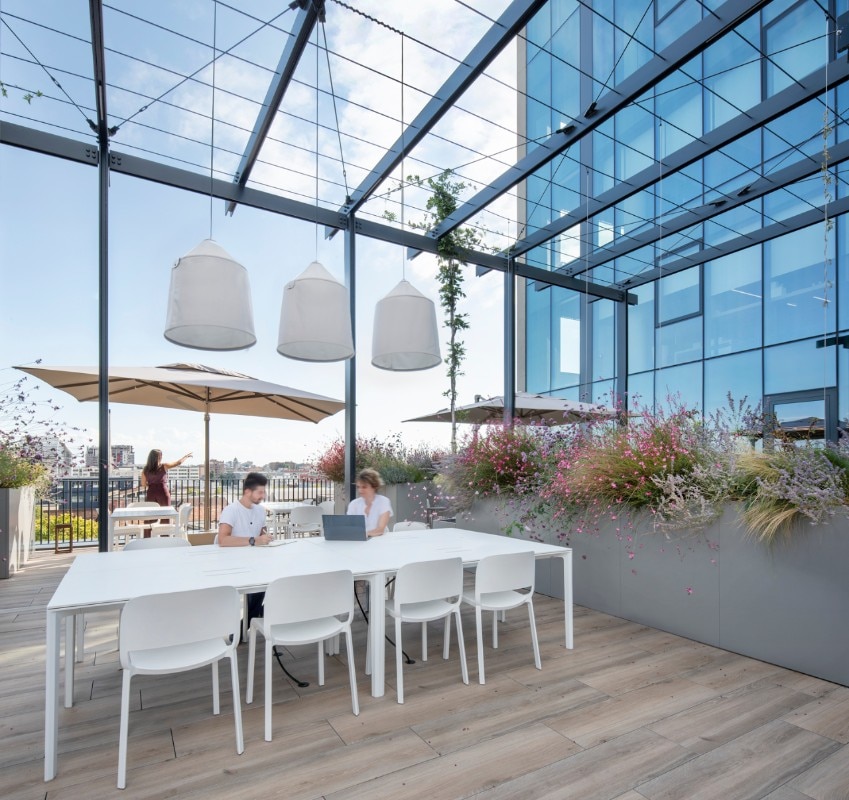
Real smart working must become the one that happens at the office.
Inside, the Workcafé leads to common areas onto which the offices of the individual brands (Dior, Guerlain, Givenchy, but also Benefit, Fresh and MakeUp Forever) are grafted: these are commercial divisions of brands with very different identities, and this requires working on effective operational spaces with a strong but also flexible characterization.
In addition to the core of the building reserved for service functions and editable raining areas, each Maison is announced by a custom LED light portal, and combines open space areas equipped with fixed workstations, with areas for informal collaboration such as atelier tables and “salottini” (separate and protected tables for focus group work) adjacent to the workstations; the glass facade windows are then complemented by large wooden frames, providing space for recollection and concentration, overlooking the garden or the city.
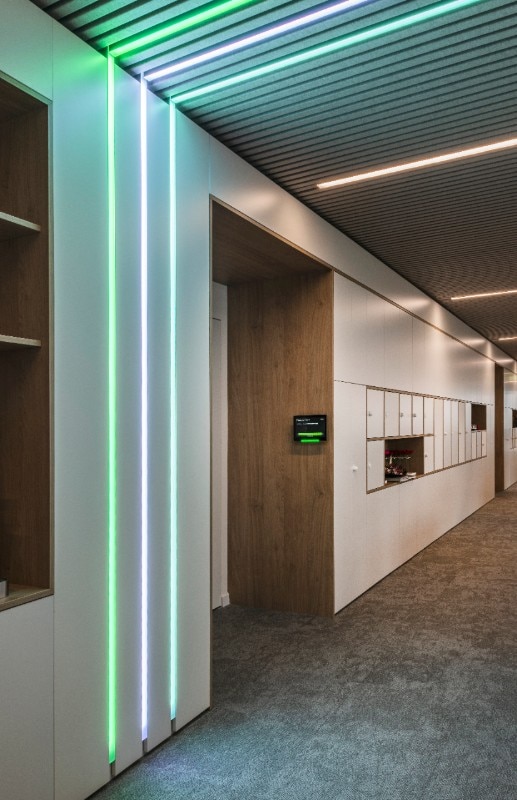
The landscape these offices open onto is also a particularly relevant aspect: outside the glazed façades, the Milan-in-becoming of the Porta Romana former railway area, of the upcoming olympic facilities. But above all, that part of Milan where Fondazione Prada is based and where brands such as Bottega Veneta have relocated their operations: are we witnessing the birth of a new cluster, as happened a few years ago in the Parisian banlieue with Chanel in Pantin? Again, Oltolini makes the point: “There is no shared plan, it just happened. Besides, our offices previously were already not far from here so we accompanied the transformation of the area”.
Certainly, the choice in terms of location turns out being particularly well-crafted: a workspace that has to explore those experiments made necessary by the progress of our social history is located in an area that will soon have to translate these experiments to the urban scale, from the re-discussion of the notion of cluster to the transformation of dismissed infrastructure, to the coexistence of public city and the urban presence of brands. A combination of experiments which is only at the beginning, and will undoubtedly be enriched by new episodes.


